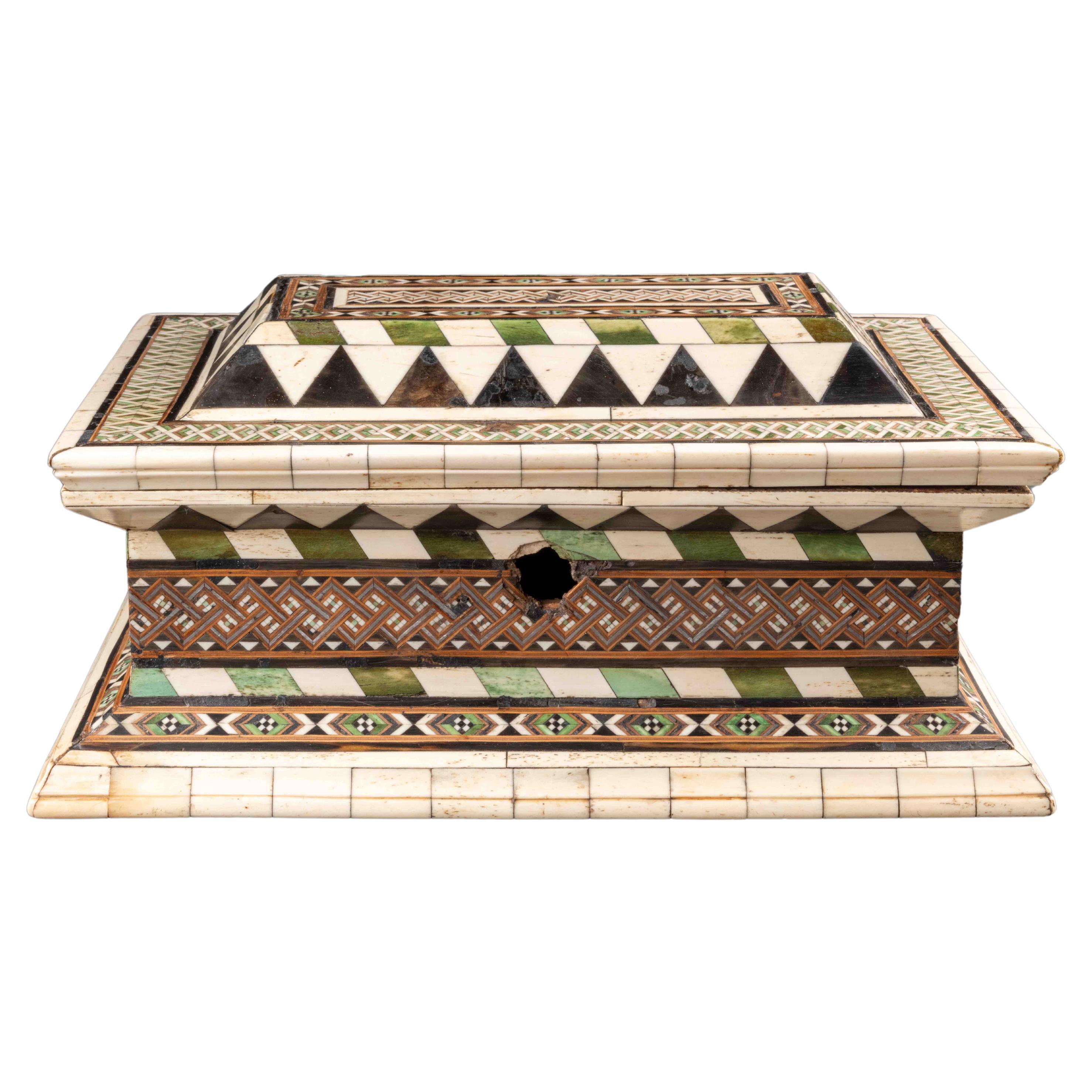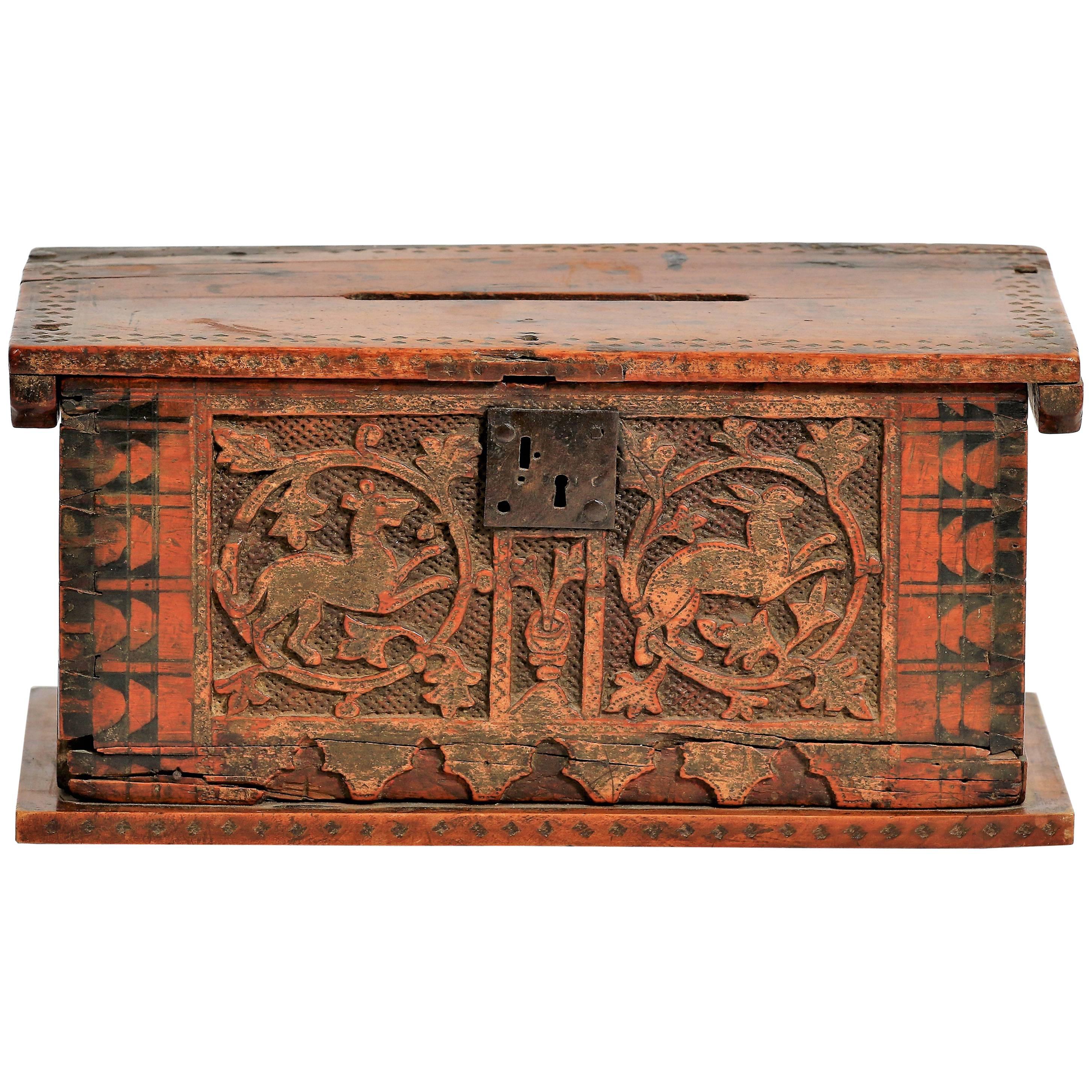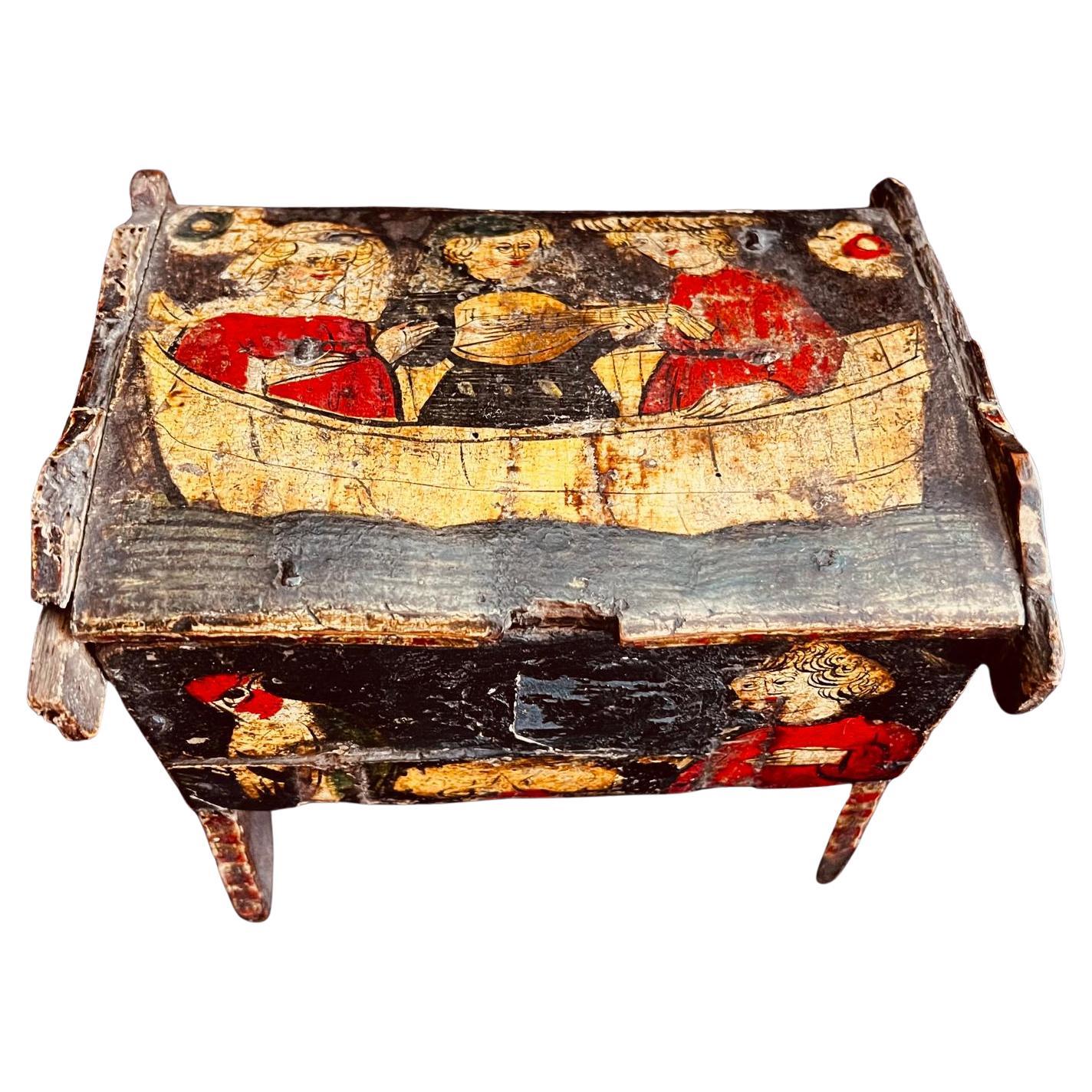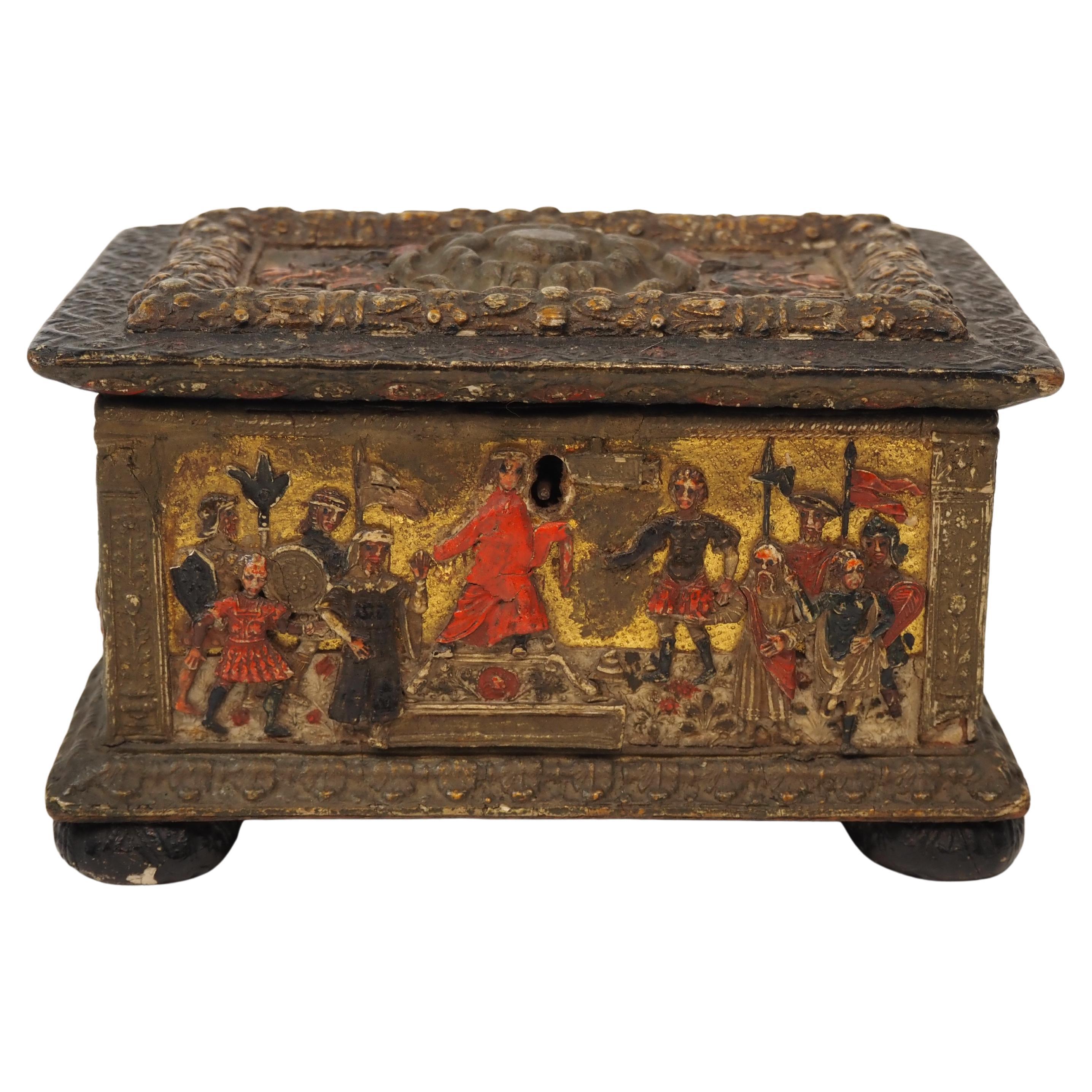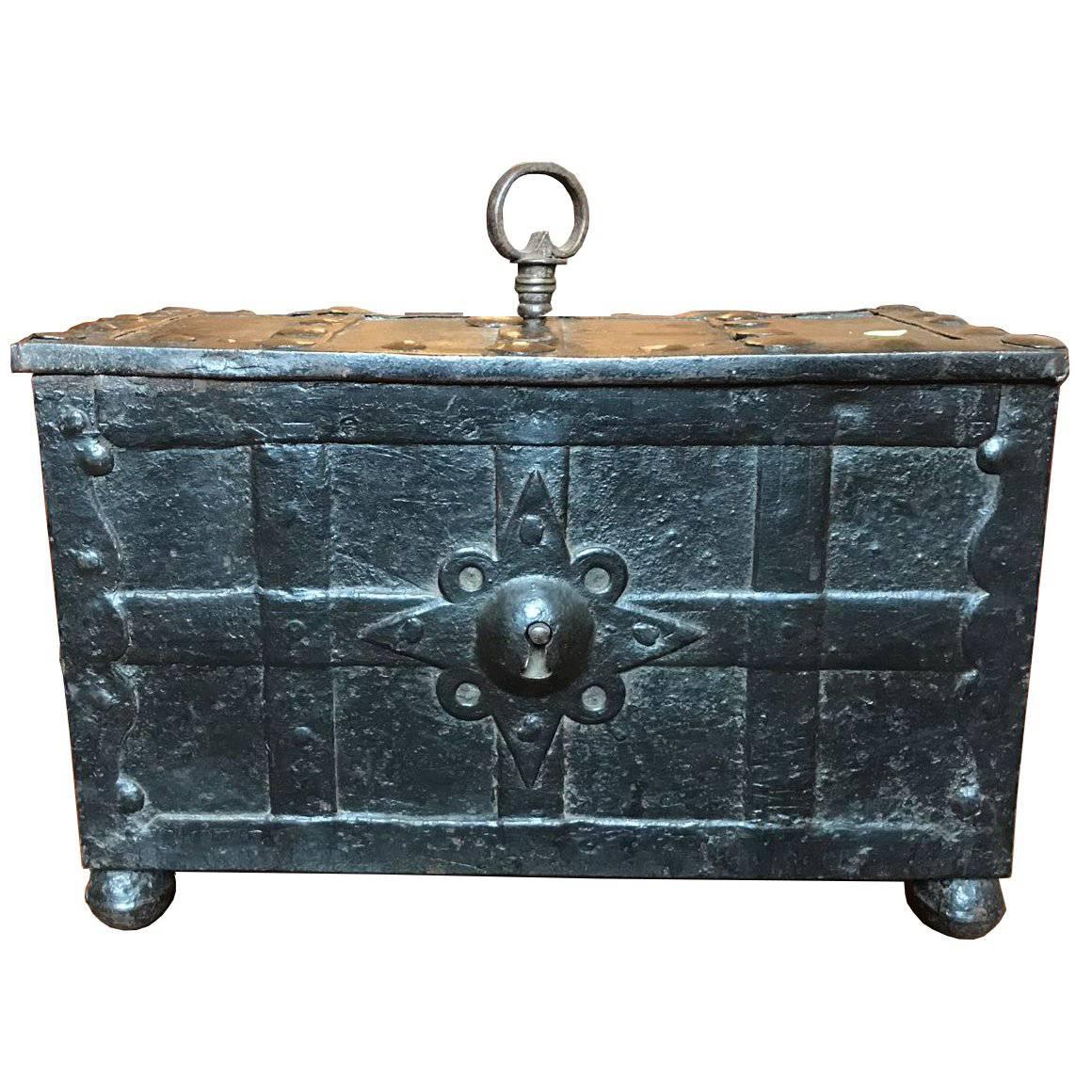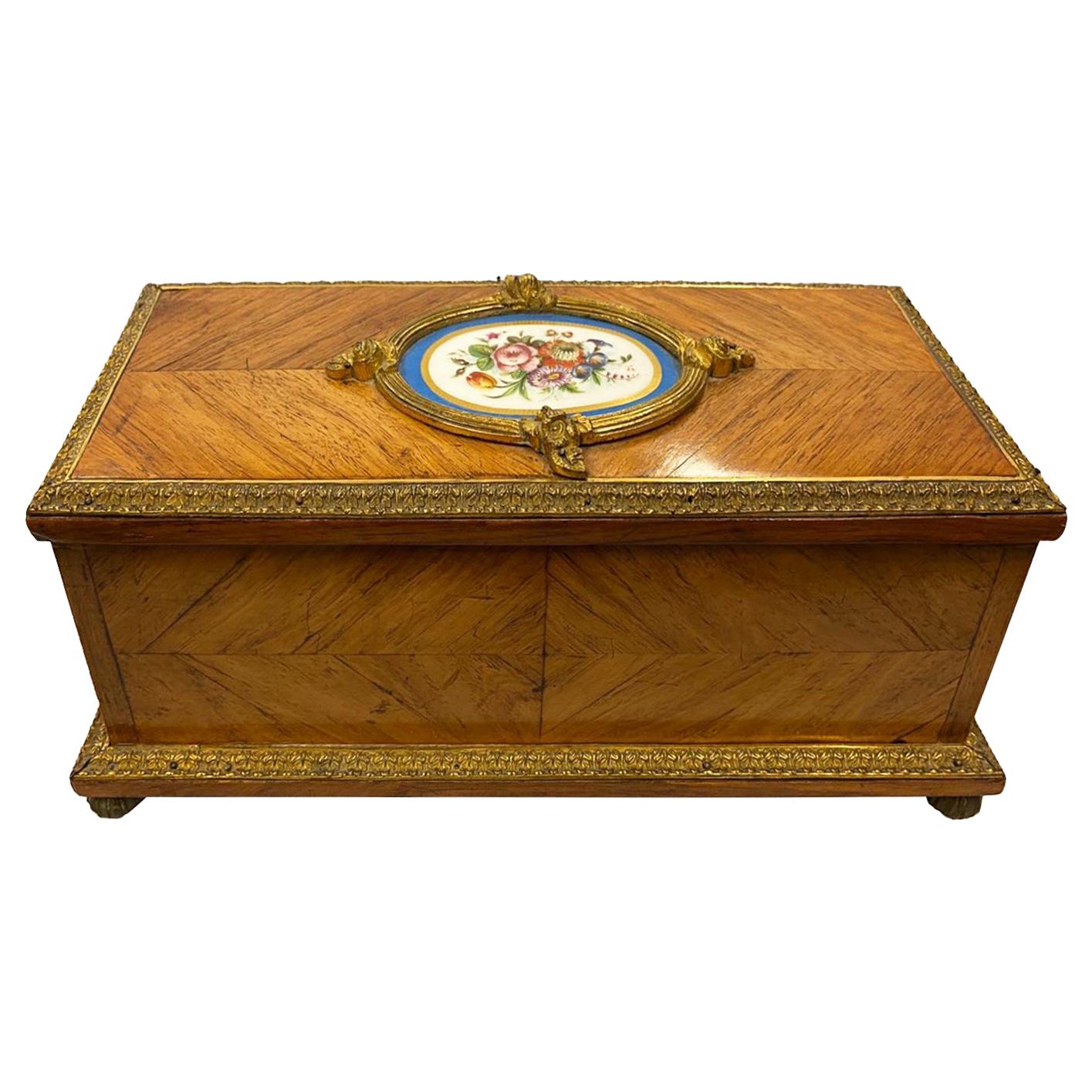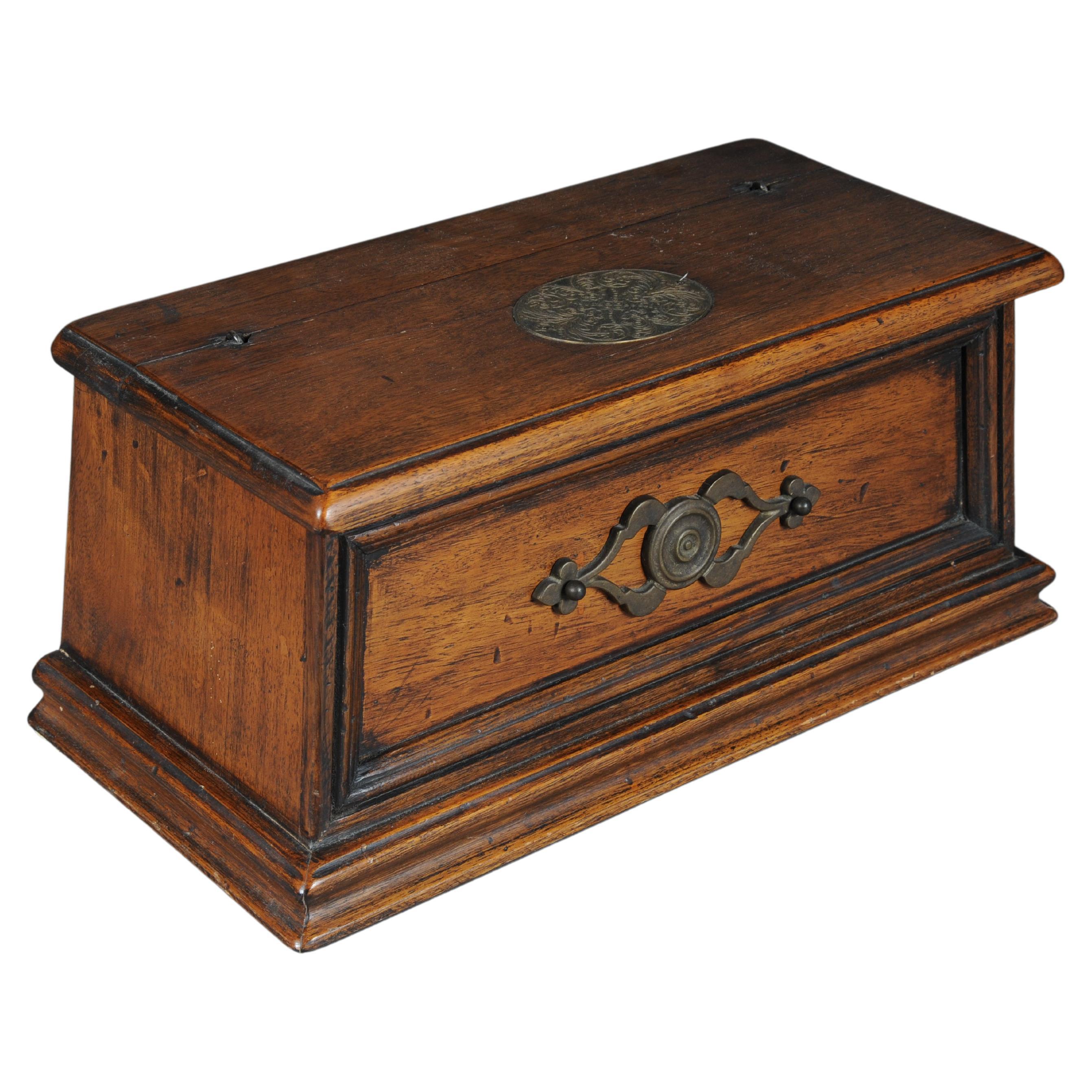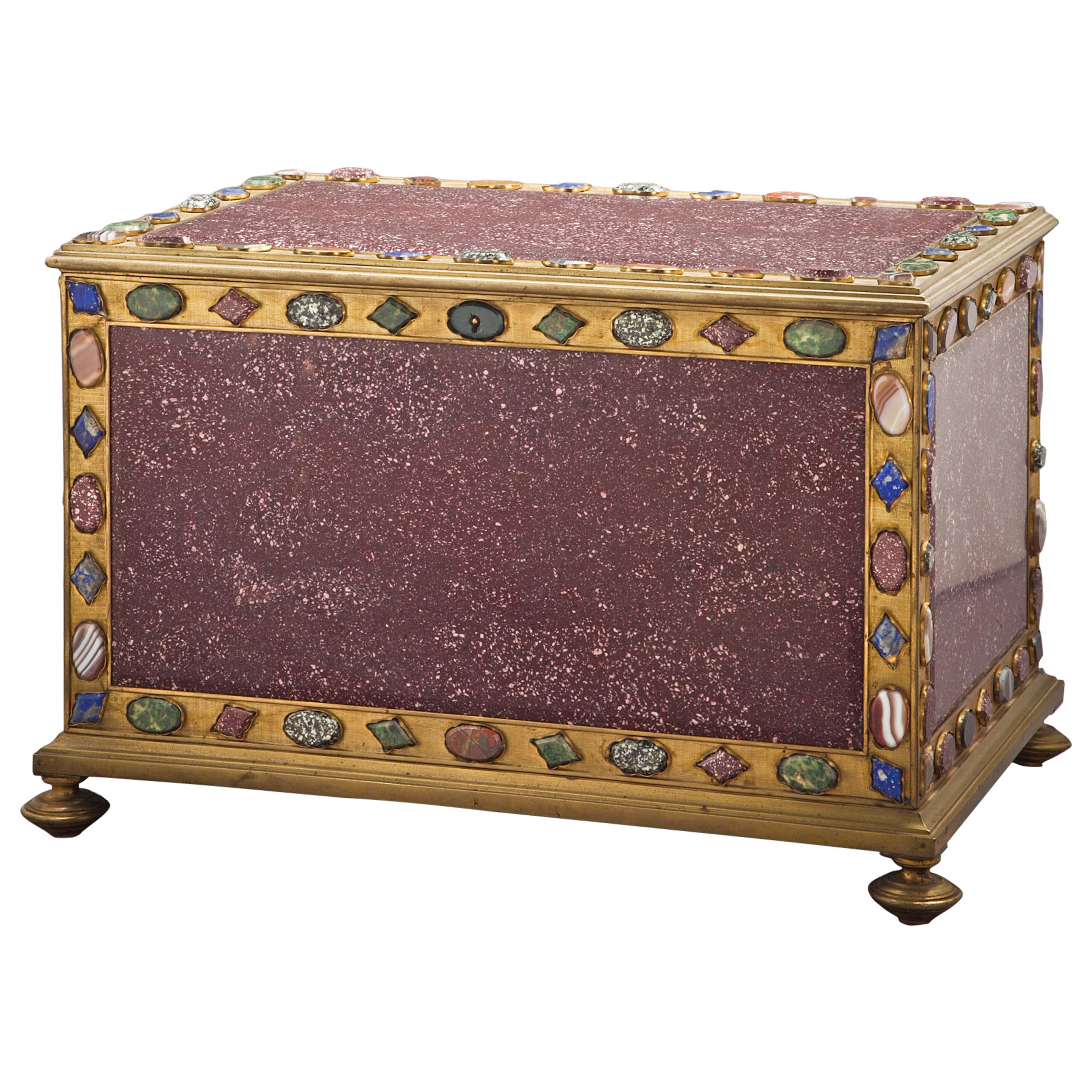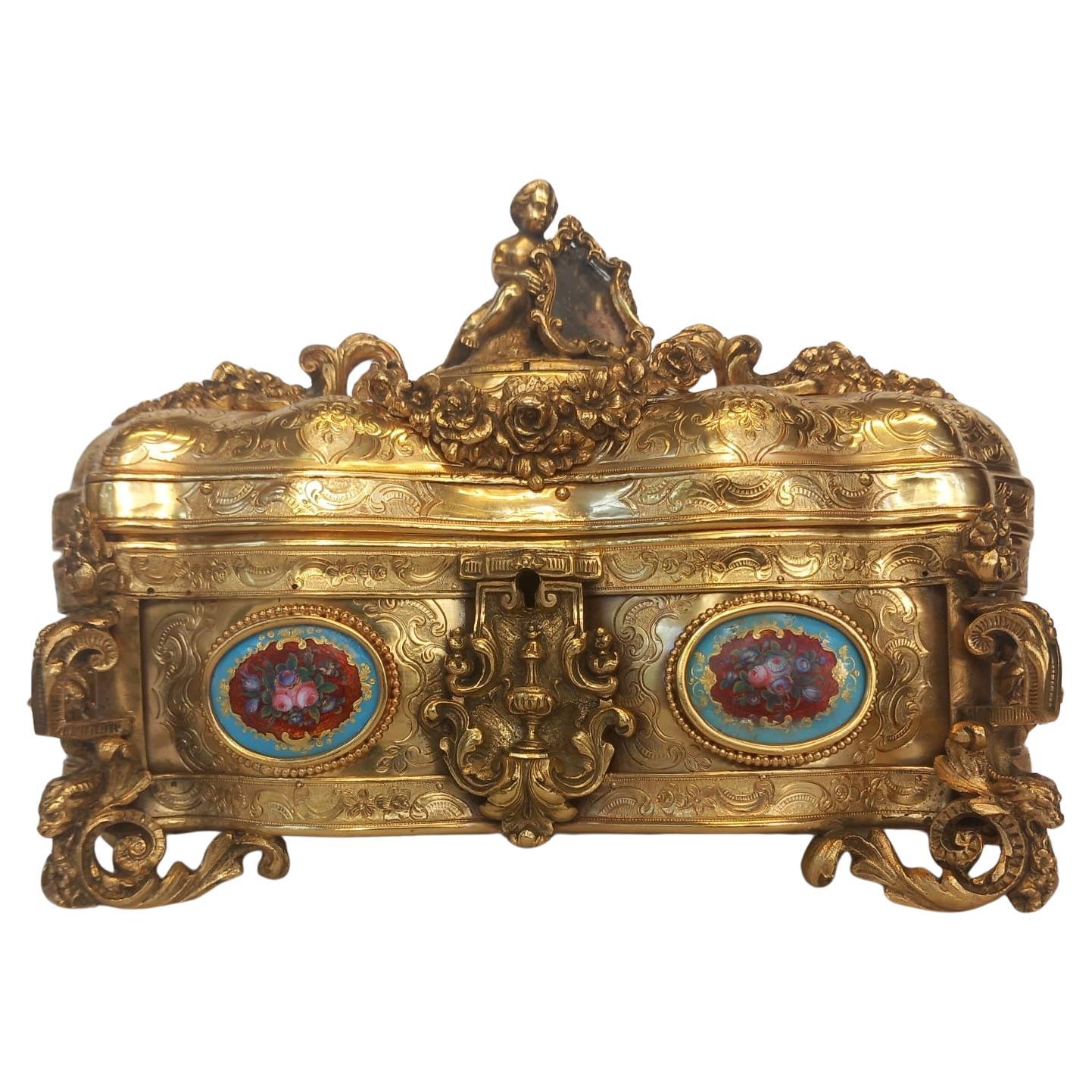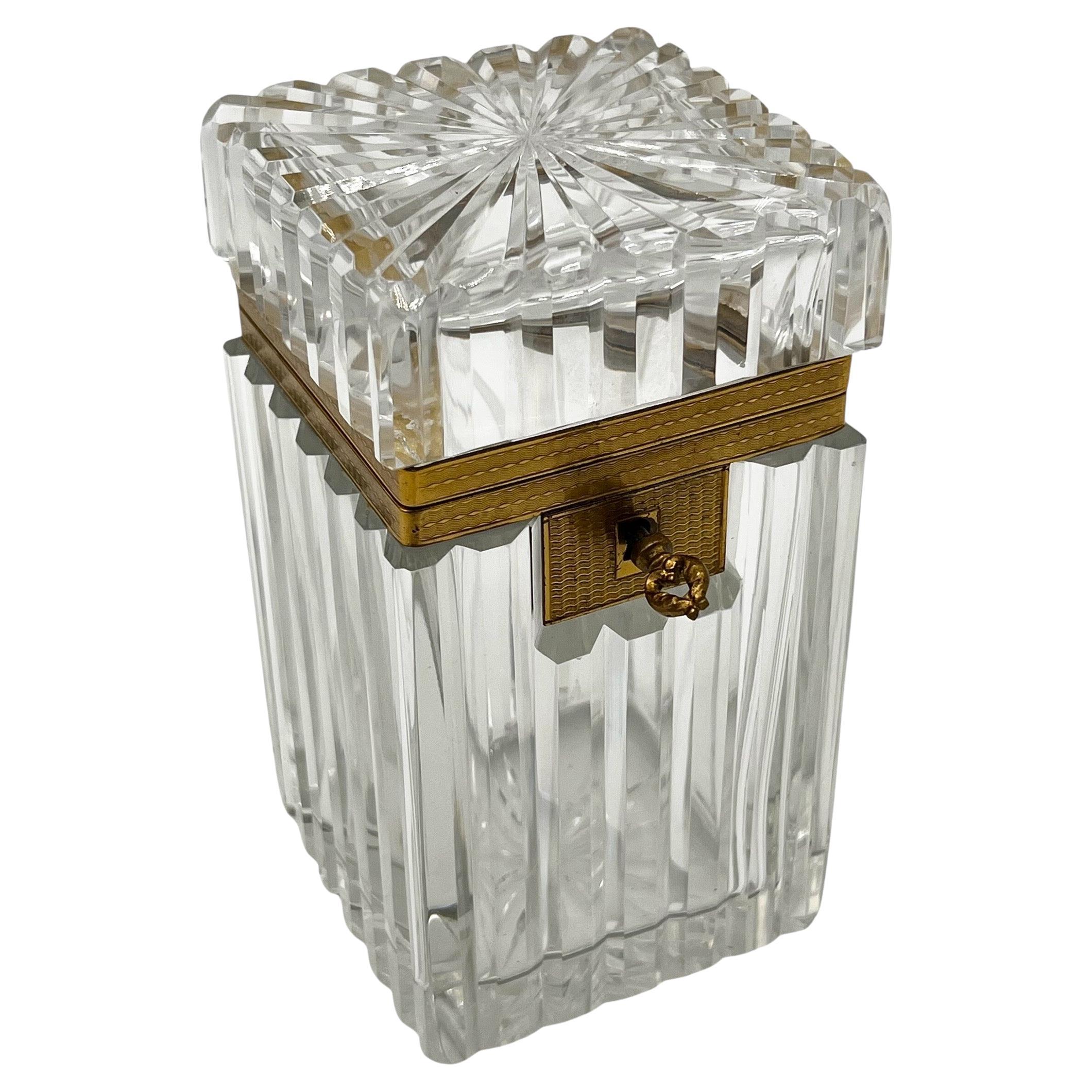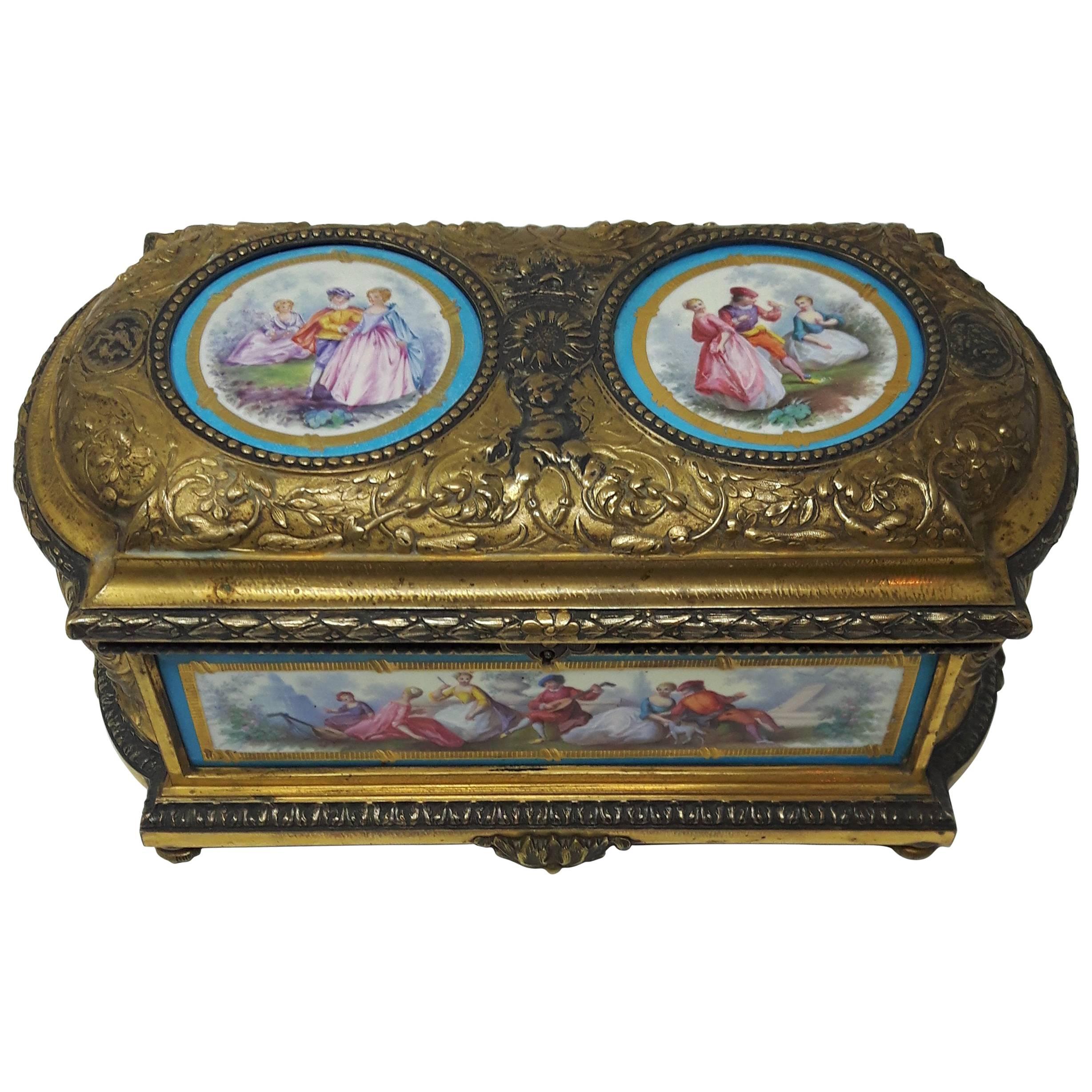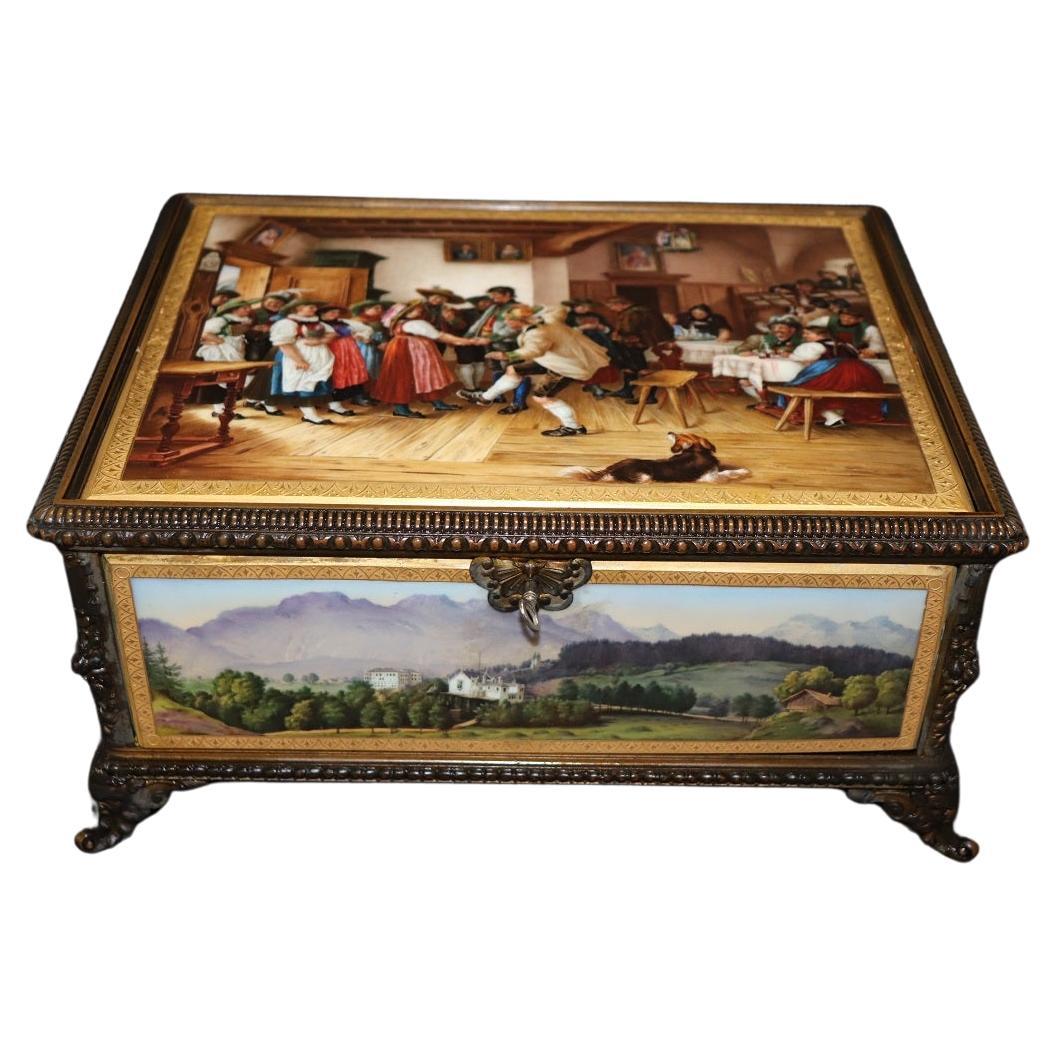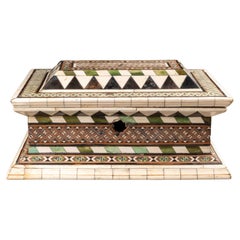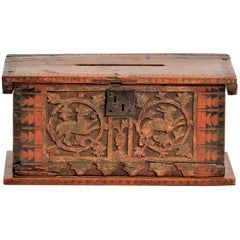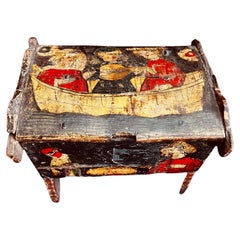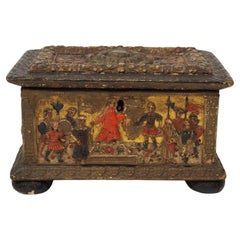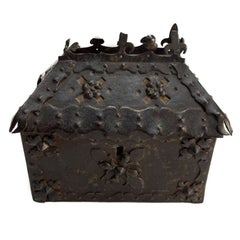
Medieval Patinated Iron-Mounted Oak Casket, 15th Century
View Similar Items
1 of 9
Medieval Patinated Iron-Mounted Oak Casket, 15th Century
$2,475List Price
About the Item
- Dimensions:Height: 7 in (17.78 cm)Width: 5.75 in (14.61 cm)Depth: 4 in (10.16 cm)
- Style:Medieval (Of the Period)
- Materials and Techniques:Iron,Patinated
- Period:
- Date of Manufacture:15th Century or Earlier
- Condition:Replacements made: hinge and screws are replacements. Wear consistent with age and use. Minor losses.
- Seller Location:WILMINGTON, CA
- Reference Number:Seller: 2848414629301stDibs: LU7059230037542
Authenticity Guarantee
In the unlikely event there’s an issue with an item’s authenticity, contact us within 1 year for a full refund. DetailsMoney-Back Guarantee
If your item is not as described, is damaged in transit, or does not arrive, contact us within 7 days for a full refund. Details24-Hour Cancellation
You have a 24-hour grace period in which to reconsider your purchase, with no questions asked.Vetted Professional Sellers
Our world-class sellers must adhere to strict standards for service and quality, maintaining the integrity of our listings.Price-Match Guarantee
If you find that a seller listed the same item for a lower price elsewhere, we’ll match it.Trusted Global Delivery
Our best-in-class carrier network provides specialized shipping options worldwide, including custom delivery.You May Also Like
Embriachi workshop marquetry casket - Northern Italy, 15th century
Located in Bruxelles, BE
Embriachi workshop marquetry casket
Northern Italy, 15th century
Alla certosina inlays (bone, stained bone, pewter and wood)
H 28.2 x W 18 x D 14 cm
This beautiful casket of rectangular form is richly decorated with the characteristic geometric patterns of the Embriachi style.
The intricate geometric patterns are fashioned by juxtaposing lighter and darker pieces of wood, (colored) bone, horn and pewter. The lid and base are framed by a broad band of horn. When ivory became scarce in Europe due to disrupted trade routes, bone was substituted.
The attention to Symmetry and balance created an harmonious visual effect
Enhancing the overall aesthetic appeal of the casket.
The application of geometrical motifs is in Italy known as marquetry ‘alla Certosina’, named after the Certosina Church in Pavia with its famous altarpiece decorated in this way. This is ‘intarsia technique’, a term derived from the Arabic 'tarsi', which means ‘incrustation' recalling ancient mosaics made from various materials.
These geometric elements not only enhance the aesthetic appeal of the caskets but also demonstrate the versatility and skill of the artisans in creating multifaceted works of art.
‘Alla Certosina’ became famous through the Northern Italian Embriachi family who achieved a particularly high standard in working in this technique. Venice in particular was known for the production of these luxurious boxes. The caskets, hexagonal or rectangular, surmounted by a lid decorated in several registers constitute the secular, albeit equally renowned component of the workshop’s production, in addition to mirror frames and various everyday objects.
The method of fabrication of those objects was based on two concepts that underlay pre-industrial production: standardization and modularity, thanks to a distribution of skills according to the different phases of fabrication.
even the realization of the marquetry motifs (in the form of ingots from which portions of the desired size were cut) were therefore entrusted to various specialized craftsmen, as were the assembly phase.
Today better known thanks to the extensive research work recently carried out by Michele Tomasi, this workshop owes its name to its founder and owner, the Florentine Baldassare Ubriachi (or degli Embriachi), a merchant and banker established in the Tuscan capital before he settled in Venice in 1395. Together with sculptor Giovanni di Jacopo, who directed the workshop, from the last years of the fourteenth century, Baldassare oversaw a production that was truly original, and still easily recognizable today, comprising monumental altarpieces and various objects, primarily triptychs and caskets.
The precise location of the workshop is unknown, except that it originated in Florence and in ca. 1431 there was apparently a workshop in Venice, in the area of S Luca. They employed local workers specializing in 'certosina' (inlay of stained woods, bone and horn), and the workshop produced items carved in bone (usually horse or ox) with wood and bone marquetry.
The geometric decoration of Embriachi caskets reflects the artistic complexity and attention to detail that characterized their work.
this inlaid casket is a testament to the skill and artistry of the Embriachi family and serves as a stunning example of the decorative arts of the late Middle Ages.
Related Literature :
E. Berger, Prunk-Kassetten: Europäischen Meisterwerke aus acht Jahrhunderten / Ornamental Caskets...
Category
Antique 15th Century and Earlier Italian Renaissance Decorative Boxes
Materials
Pewter
$20,279 Sale Price
22% Off
Free Shipping
Very Rare Casket Minnekästchen or Box, Germany or Italy, 15th Century
Located in Beuzevillette, FR
Wooden coffret, call minnekästchen, engraved with a dog, a hare and foliage with
polychromy remains. During the Middle Age, the hare is a symbol of fertility, joy and represents the Christ...
Category
Antique 15th Century and Earlier European Gothic Decorative Boxes
Materials
Iron
Antique Rare 15th Century Venetian Casket Former Dr. Albert Figdor Collection
Located in Doha, QA
This exceptional 15th-century Venetian painted casket is a rare example of early decorative art from the late Medieval to early Renaissance period in the Republic of Venice, Italy. H...
Category
Antique 15th Century and Earlier Italian Renaissance Decorative Boxes
Materials
Wood, Paint
Wooden casket with polychrome and gilded "pastiglia" relief decor, Italy 15th c.
Located in Gorssel, GE
A rare wooden casket with polychrome and gilded pastiglia relief, Italy, 15th century.
The box is adorned with four finely executed scenes from the life of an unknown martyr — beautifully preserved and remarkably vivid after centuries.
Dimensions: 15.5 × 10.4 × 9 cm
Provenance: Dutch private collection
In overall good condition for its age, with minor losses to the surface and possible retouching to the polychromy. The ball feet are likely later additions.
Pastiglia [paˈstiʎʎa], an Italian term meaning "pastework", is low relief decoration, normally modelled in gesso or white lead, applied to build up a surface that may then be gilded or painted, or left plain. The technique was used in a variety of ways in Italy during the Renaissance.
White lead pastiglia was a north Italian speciality, produced between about 1450 and 1550. Six workshops were identified by Patrick M. De Winter, although their location remains uncertain; the Workshop of the Love and Moral Themes, whose products seem the most numerous, was possibly at Ferrara, where the painter Cosimo Tura began his career gilding caskets. Venice is also thought to have produced them. Other workshops identified by De Winter include the "Workshop of the main Berlin casket" and "Workshop of the Cleveland Casket".
The subjects were typically classical, drawn from both mythology and Ancient Roman history (especially the early period covered by Livy), but biblical ones are also found. Compositions can often be shown to be borrowed from another medium, such as prints or bronze plaquettes...
Category
Antique 15th Century and Earlier Italian Renaissance Decorative Boxes
Materials
Gesso, Wood
Early 17th Century Medieval Handcrafted Black Iron Coffer or Box
Located in Brescia, IT
The iron coffer, fully original in every part of it, was forged and handcrafted in German in the 1610. Complete with key. Full working iron mechanisms. It ...
Category
Antique Early 17th Century German Medieval Decorative Boxes
Materials
Iron
French 19th Century 'Sevres' Porcelain Mounted Casket
By Tahan Paris
Located in Brighton, Sussex
A fine quality late 19th century gilded ormolu and Sevres style porcelain mounted casket, the hinged lid opening to a silk lined interior (needing repair) and raised on ormolu melon ...
Category
Antique Late 19th Century French Louis XVI Decorative Boxes
Materials
Porcelain, Walnut
Recently Viewed
View AllMore Ways To Browse
15th Century Oak
Iron Casket
Medieval Casket
Oak Casket
15Th Century Casket
Brass Trinket
Antique Bone Box
Antique Brass Inlaid Boxes
Silver And Guilloche Enamel Box
Vintage Hand Carved Wood Box
Antique Card Box
Antique Document Box
Apple Box
Gold Powder Box
Indian Jewelry Box
18th Century Hand Painted Boxes
Wood Cigarette
Antique Coromandel
